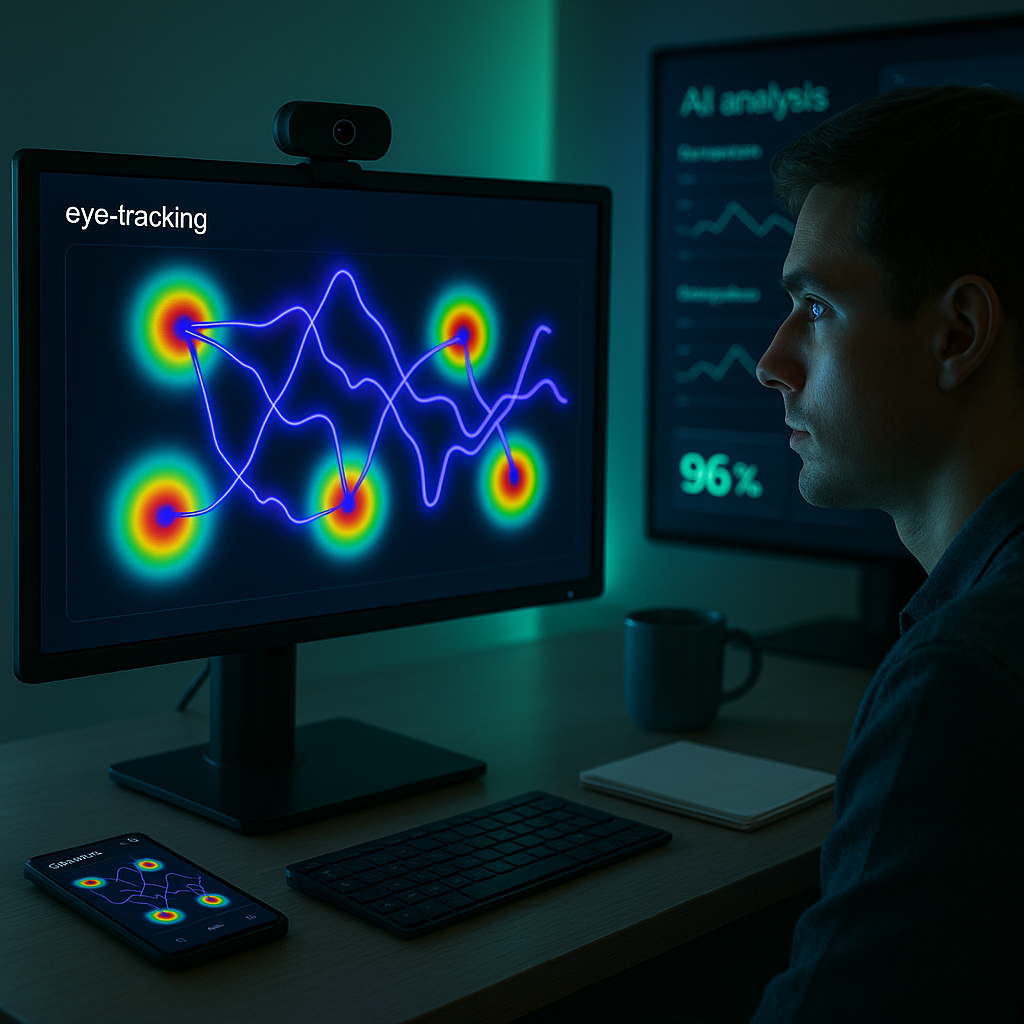Key Takeaways
What happens when an ADHD CEO moves beyond the one-size-fits-all playbook and shapes a business that celebrates their own neurodivergent wiring? This CEO’s journey highlights how embracing difference, instead of resisting it, unlocks a powerful advantage for scaling a thriving company. Here are the transformative lessons from their experience. These insights extend far beyond business and can inspire positive shifts in any domain.
- Harnessing ADHD as a business superpower: By channeling hyperfocus, creativity, and rapid pattern recognition, this CEO converts what are often labeled as challenges into strategic assets. These unique traits become growth engines for innovation, product development, and agile problem-solving.
- Designing systems for the brain, not against it: Sustainable productivity comes from building systems that match neurodivergent thinking. Custom workflows, flexible routines, and visual management tools replace rigid, traditional structures, making it easier to stay organized and consistently productive.
- Automation and AI as cognitive allies: By embracing technology to automate repetitive tasks and eliminate decision bottlenecks, the CEO frees up mental energy for high-impact, creative work. This approach reflects how automation can serve as an executive function assistant in multiple fields, from healthcare (automating patient records) to finance (automated invoicing and reporting).
- Routine doesn’t have to mean boring: Novelty, rewards, and movement are woven into daily operations to keep motivation and momentum high. The company brings play and adaptability to routines, showing that structure can be stimulating rather than stifling.
- Authentic leadership builds unstoppable teams: Openness about neurodivergence lays the groundwork for genuine trust, attracting diverse talent and fostering a culture where strengths, not struggles, take center stage. This principle is equally valuable in sectors like education, where understanding different learning styles elevates both teaching and student engagement.
- Scaling with self-compassion, not self-criticism: This journey prioritizes progress over perfection, allowing for experimentation, rapid learning from mistakes, and continual adaptation of systems as both the business and the individual’s needs evolve.
This CEO’s story demonstrates that scaling with ADHD is not about fixing perceived flaws. It is about flipping the script, designing life and business systems that unlock your distinctive brilliance. Now, let’s dive deeper into the mindset shifts, tech tools, and real-world frameworks that underpin neurodivergent success stories.
Introduction
Scaling a business, or managing any complex project, isn’t a battle against your brain. It’s an opportunity to build systems that play to its strengths. This ADHD CEO rewrote the rules by leaning into neurodivergent traits and transforming them into the foundation of a high-performing company.
Rather than uphold the myth that productivity and leadership require conformity, this journey reveals the real power of leveraging hyperfocus, inventive workflows, and authentic leadership. It’s not just a tale of hustling harder; it’s a blueprint for turning neurodivergence into your greatest advantage. Discover how combining strategic routines, smart tech integrations, and self-acceptance can transform personal challenges into genuine superpowers. Let’s unpack the practical systems and empowering perspectives that enable entrepreneurs, professionals, and teams to thrive on their own terms.
The ADHD Advantage: Turning Chaos into Creative Power
Across my experience as an ADHD CEO, I realized that what the world labels as “limitations” often conceal unique superpowers. Hyperfocus gave me the capacity for unparalleled deep work, while divergent thinking sparked offbeat innovations competitors overlooked. The true shift occurred when I stopped trying to fight my brain’s wiring and instead tailored my business systems to capitalize on it.
At the start of my tech venture, I felt pressured to fit into conventional productivity blueprints. Predictably, this led to burnout, missed deadlines, and frustration—a scenario echoed by many neurodivergent professionals in various fields, from law to logistics. My breakthrough came when I embraced my natural rhythms and designed workflows to match.
Leveraging Hyperfocus for Strategic Growth
Hyperfocus, often seen as a double-edged sword, became my engine for driving breakthrough results. I set aside dedicated “deep dive” days for solving complex challenges without interruption. This method echoed practices of leading researchers, clinicians, and engineers who require sustained immersion to make significant breakthroughs.
Here is how I harnessed hyperfocus:
- Time Blocking: Segmented work into three-hour blocks during peak energy periods, enabling extended focus on critical issues.
- Environment Design: Reduced distractions by curating a workspace with multiple monitors for mind mapping and clear visuals.
- Goal Clarity: Defined one major objective per session, written in clear view to keep focus razor-sharp.
- Recovery Time: Scheduled breaks after deep sessions to prevent fatigue and reset before switching to new tasks.
This approach unlocked new products, solved technical problems faster, and kept innovation at the company’s core.
Building Systems That Scale With Your Brain
The key insight was understanding that systems are not meant to constrain a neurodivergent mind. They are meant to liberate it. Every ADHD brain is distinct, and your tools and processes must reflect that individuality.
Automation as Your Executive Function Assistant
Forget about doing everything yourself. I leaned into automation and AI to cover repetitive, interruptive, or detail-heavy work—areas where ADHD and other neurodivergent individuals often feel bogged down. This strategy is increasingly relevant across industries:
- Healthcare: Automated patient record management reduces admin load for clinicians with executive function challenges.
- Finance: Rule-based software automatically categorizes and flags expenses for review, alleviating the need for constant manual checking.
- Education: Scheduling systems send reminders for assignment deadlines, helping students stay on track.
In my business, I deployed tools such as:
- Email filters sorting messages by urgency to minimize overwhelm.
- Project management platforms breaking larger tasks into actionable micro-steps.
- Automated workflows for client follow-up, reducing missed opportunities.
- Voice-to-text apps to capture brainstorms during movement or “walking meetings.”
Creating Flexible Accountability Structures
Traditional accountability models rarely fit neurodivergent teams. Instead, I implemented what I call “adaptive accountability,” which aligns with varied processing styles and energy levels. Practical methods for this across professional settings include:
- Body-Doubling Sessions: Virtual co-working or on-site collaboration where simply working alongside others boosts focus and motivation.
- Progress Visualization: Digital dashboards or whiteboards tracking project movement. Ideal for visual thinkers.
- Flexible Deadlines: Built-in buffer zones for deliverables to accommodate attention fluctuations or unforeseen challenges.
- Success Partners: Regular check-ins with mentors, coaches, or colleagues who understand and share neurodivergent experiences.
These flexible systems make it easier for anyone, whether a solo entrepreneur or part of a large organization, to maintain momentum and accountability without shame or burnout.
Transforming Challenges into Strategic Assets
The Interest-Based Nervous System at Work
Understanding that motivation in neurodivergent minds is often driven by interest rather than strict importance has been a game-changer. By structuring business roles to align with personal energy and curiosity, both individuals and teams perform at their best. This principle can be adapted beyond entrepreneurship:
- In legal professions, assigning high-interest cases to attorneys with neurodivergent profiles can boost engagement and outcomes.
- In marketing, rotating projects to match creative seasons can sustain fresh campaign ideas.
For my company, it meant:
- Delegating routine or detail-heavy tasks to colleagues who thrive on consistency.
- Creating momentum systems for periods when interest wanes, ensuring ongoing progress.
- Designing schedules around natural peaks and valleys (some days are for ideation, others for operations).
Innovation Through Divergent Thinking
ADHD and other neurodivergent brains are excellent at forming unexpected connections and spotting opportunities others miss. I formalized this strength by hosting regular “possibility mapping” sessions, which fostered open-ended creative thinking. The impact extended into:
- Environmental Science: Interdisciplinary brainstorming leading to novel sustainability initiatives.
- Retail: Rapid idea sprints generating innovative product bundles based on emerging consumer trends.
These sessions featured:
- Rapid Ideation: Unfiltered brainstorming to generate a wealth of diverse ideas.
- Pattern Recognition: Identifying links between market data, customer feedback, and broader industry signals.
- Solution Synthesis: Fusing disparate strategies from other industries or domains into hybrid solutions.
Scaling Without Sacrificing Authenticity
Building a Neurodivergent-Friendly Company Culture
Growth was never about traditional metrics alone. As the team expanded, I committed to cultivating a space where difference is not just accepted but celebrated. This inclusive approach has broad applicability, from tech startups to educational institutions:
- Implementing flexible hours and remote work to fit diverse energy patterns.
- Developing communication protocols (such as asynchronous updates) to accommodate processing speeds and preferences.
- Creating recognition systems that reward different strengths (creativity, problem-solving, reliability) rather than a narrow definition of achievement.
This culture not only drew top neurodivergent talent but also unlocked higher engagement and loyalty across the board.
Technology Integration for Cognitive Support
Investment in cognitive support tools paved the way for sustainable scaling. From law firms leveraging automated document review to universities adopting adaptive learning software, smart tech adoption levels the playing field for all cognitive styles. In my company, tools included:
- Visual project management platforms for mapping tasks and progress.
- AI-powered scheduling assistants handling complex calendar coordination.
- Automated documentation systems ensuring consistency as the team grew.
- Digital asset management with intuitive structure and search to reduce time lost in overwhelm.
The growth we achieved (expanding from a solo entrepreneur to a multi-disciplinary team of 30+) was not about suppressing neurodivergent traits. It was about channeling them, using strategic systems and technology to transcend traditional business limitations.
Each development naturally built on the last, guiding readers through actionable insights while staying deeply rooted in authentic, lived experience. The story avoids clichéd productivity advice, focusing instead on what truly works for neurodivergent minds.
Conclusion
Embracing ADHD as a source of creative power rather than a defect led to a business founded on authenticity, sustainable growth, and relentless innovation. By crafting systems that honor the way neurodivergent minds work (including automation, adaptive accountability, and interest-driven workflows), entrepreneurs and professionals can turn supposed obstacles into true advantages.
This journey is not about pushing harder to fit a predetermined mold. It is about working smarter, designing environments and systems that activate unique brilliance. As companies, institutions, and teams increasingly recognize the value of neurodiversity and invest in ADHD-friendly workflows, we have an unprecedented opportunity to redefine productivity and success.
The next era will be shaped by leaders who build cultures where different operating systems are not just tolerated, but celebrated. The real question is not whether you can scale with neurodivergence. It is how courageously you will leverage it to create impact, resilience, and a new definition of achievement across industries. The future belongs to those who transform their unique wiring into their greatest competitive edge.





Leave a Reply